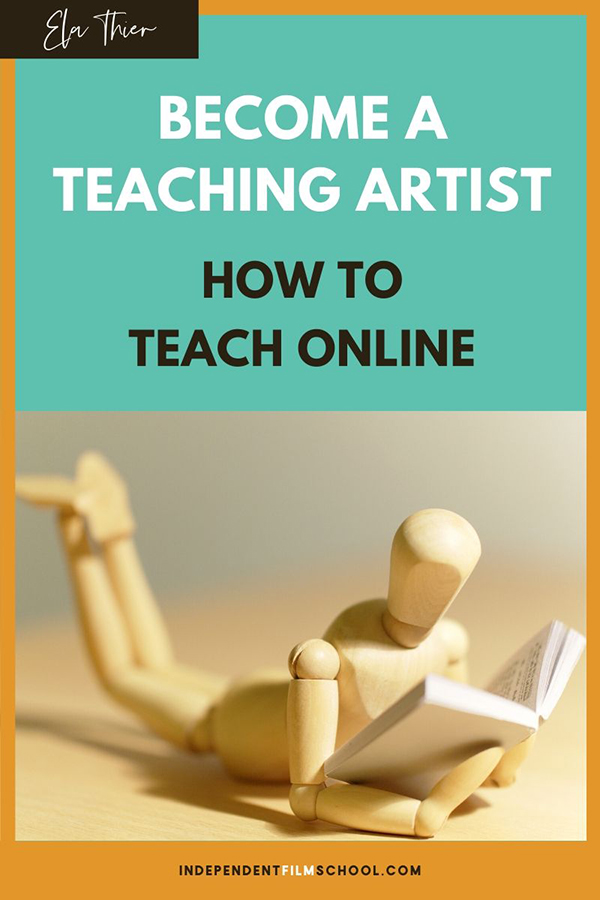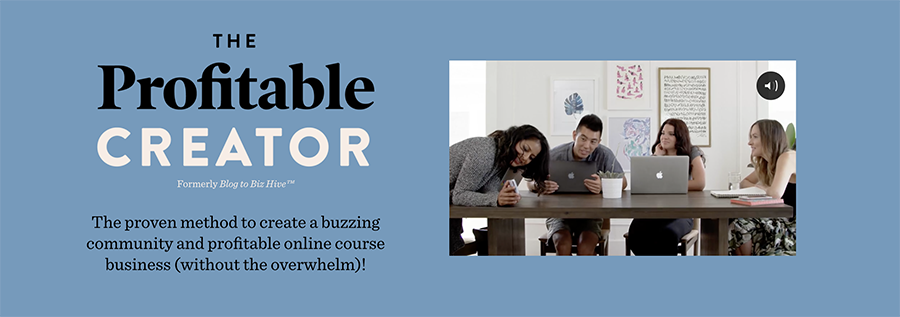
Throughout the ages, artists have made their livelihood as teaching artists. It’s satisfying because it’s meaningful work that benefits others. It also keeps us afloat while leaving us enough time and brain space to focus on our creative projects. I recommend it.
I’m a writer-director (filmography on IMDB) and I’ve been teaching my craft to screenwriters, actors and filmmakers since 2006.
In 2018 I took Melyssa Griffin’s course, The Profitable Creator (then titled “Blog to Biz”) and began to offer my courses online. This was a game changer.
Teaching art has been my primary source of income, and has freed me up to do my work as a filmmaker. It’s also helped me a build a community and network of support.
Since I began to teach online, my income quadrupled while freeing me even more so to focus on my work as a filmmaker rather than a teacher.
In this article, I’d like to share my top recommendations to teaching artists.
These will fall into two categories:
- How to get the work
- How to do the work
Don’t wait to get hired. Teach online.
Gone are the days when you needed a resume and a pair of uncomfortable shoes for your interview. Now what you need is your phone camera and some courage.
Remember the invention of the printing press? (All good, none of us do.) The printing press transformed society by making books, and therefore information, widely available. It democratized the opportunity to be a student. It created educated populations.
The internet has had as profound an impact on society. It democratized being a teacher.
I’ve walked away from A teaching gig at AN ivy league film school because teaching online offers more.
True story. I’ve turned down a few reputable teaching gigs, actually, that would have looked wicked impressive on my resume. But you know what? I earn more doing my own thing: teaching online. This also gives me the freedom to make my own schedule, decide how many hours I want to devote – if any.
Teaching online also frees me to teach the way that I want to teach. I’m not confined to the expectations of any institution. My students get a crapload more out of me when I teach on my own terms. And I’m allowed to use terms like crapload. So… win win.
Anyone can be a teacher and leader because now any of one of us can reach large groups of people online and make ourselves, and our services, known to people. You no longer need to be a multi-billion dollar corporation (or university…) spending millions a month on advertising. Nah uh. You can be a regular person like me, write this article, use a crapload of words that you’re not supposed to use, and get it out to people. Online.
To teach online …you have to be willing to sell.
If you create a great course but nobody knows about it, no one will benefit. Including you.
If you build it, they won’t come. Not unless you tell them.
Teaching online requires two skills: teaching, and selling. Once you create a course that you know others will benefit from, it’s time to toot your horn.
You have to be willing to tell them why and how your course is different from any other. And your course will be different from any other – because you’re the one teaching it.
“SELLING” IS OWNING IT THAT YOU HAVE SOMETHING UNIQUE TO OFFER.
I have a student who is a professional photographer, so she thought to create a photography course. There are a billion of photography courses you can find online. But none of them will be like hers.
I, for once, have no interest (or time!) for a photography course. But when I read her course outline, I wanted to take the course! See, it wasn’t for photographers, really. It’s for regular Joes and Janes who have a phone, and want simple tricks that will make their family portraits aaaamazing – with whatever camera they have. Yes please!
I’m not talking about selling something you don’t believe in. I’m not talking about manipulating people into buying something you wouldn’t buy yourself.
I’m talking about creating and selling the course that you yourself would wish you could have taken when you needed it.
How to teach online: it’s not just the content, it’s the experience.
Teaching is not about pouring a bunch of information down somebody’s throat. It’s about opening someone up to be able to receive the information.
If I threw a bunch of seeds into the ground, they may or may not sprout.
But if I rake and hand fork the soil to loosen it, break apart large soil clumps, remove debris such as stick, rocks and roots, add a fertilizer and organic matter, then finish be creating a level surface, then the sprouts will come. (Yes, I just googled all that. Like I said… the internet…)
As a teaching artist, half the work is the information you provide. The other half is making it possible to absorb that information.
Loosen the soil: Get people to reclaim the fun of the work, get playful, not take it all that seriously. Break apart large soil clumps – help them remove any tightness or worries about results and performance.
Remove the debris: Encourage, encourage, encourage, encourage, to remove self-doubts and insecurities.
Add fertilizer: Creative ways of offering support? From you or from other students and community? What can you offer that will nourish your students’ confidence and self esteem?
The more confident and supported we feel, the easier it becomes to learn. A teacher’s job is to teach, but their job is also to create the conditions that make learning possible.
Teaching art: avoid the laundry list of details.
I’ve taken a few of these very tedious courses that go through a very long list of details: you need to know this, and know this, and also know this, and you must also know this. Yaaaaaawn. Can’t absorb any of it. Those details are important, but they can’t be absorbed like that.
Here’s the secret to my own teaching method: I always begin with the brooooooad strokes.
In this module: here’s what we’re going to learn about.
Here are the three key things you need to know.
Ok. Now that we have the broad subject. And we know the three key things. Let’s take each key at a time and create a few bullet point.
Make sense?
I teach in concentric circles. Broad strokes. Fill it in with the headlines. Fill in each headline with the details.
Happy teaching!
Ela

I’d like to recommend Melyssa Griffin’s course, The Profitable Creator.
This course was a game changer for me. It’s what made it possible for me to move my in-person workshops into an online film school that by now has quadrupled my income and is freeing me up to focus on filmmaking rather than on teaching filmmaking.
Every person has something to teach.
If you’d like to learn how to create and sell online courses, there isn’t a better resource that I’m aware of.
There’s a lot out there, I know. This is the program that I’d recommend. It’s clear and easy to absorb, and it’s mega effective if you implement it.
Private consultation bonus
Enroll using the link in this article, and you’ll automatically receive a private consultation with me to discuss your course or sales tactics.
I’m an affiliate (let’s stay transparent), but only because I myself took Melyssa’s course and benefitted from it like crazy. I sell other programs only if I myself have used them, saw startling results, and would recommend them to my closest friends.
